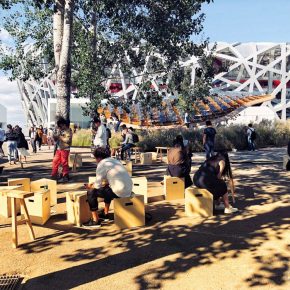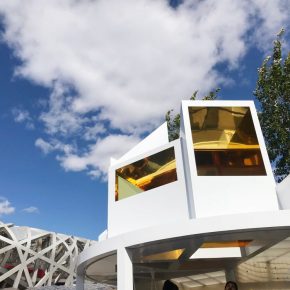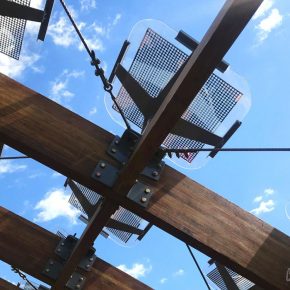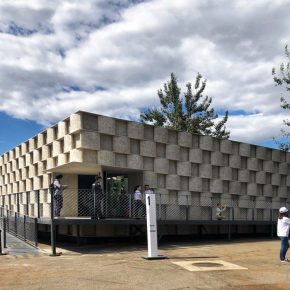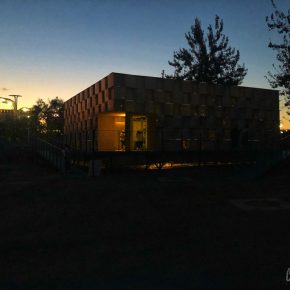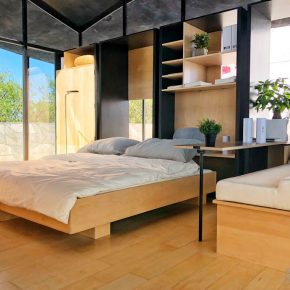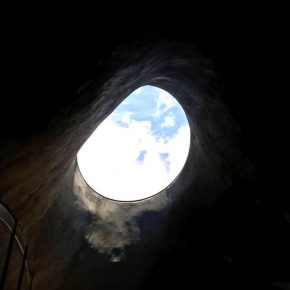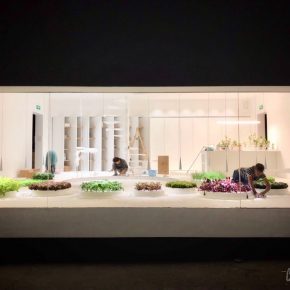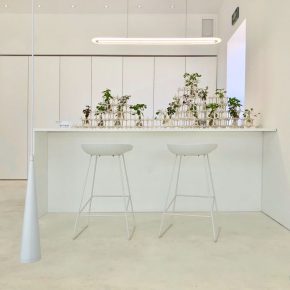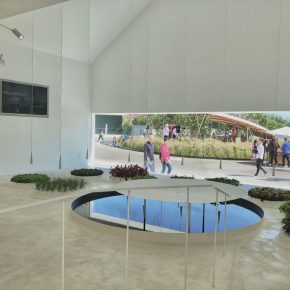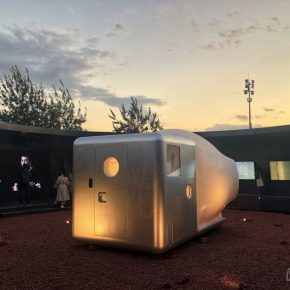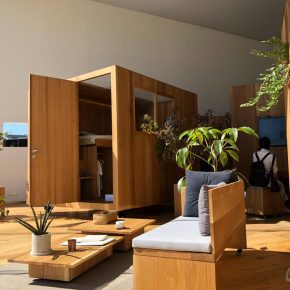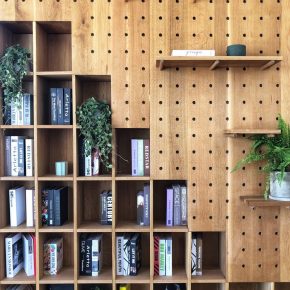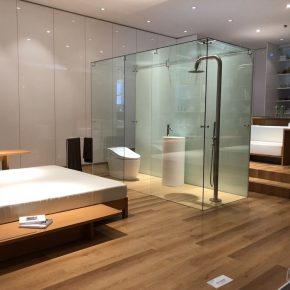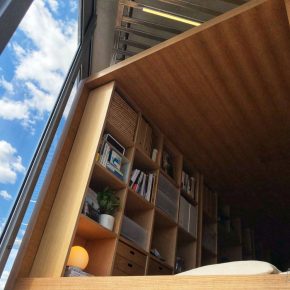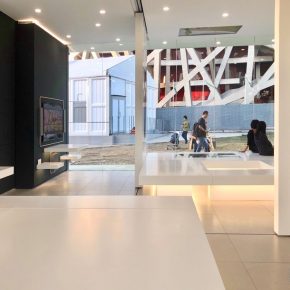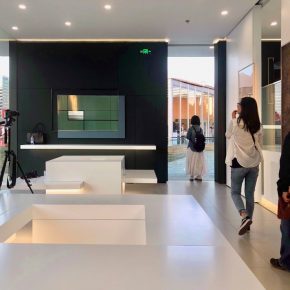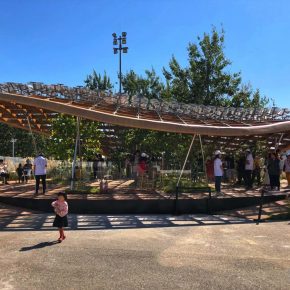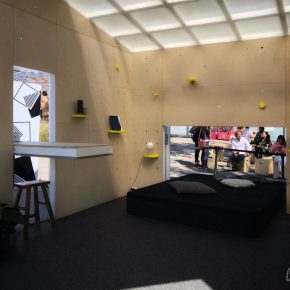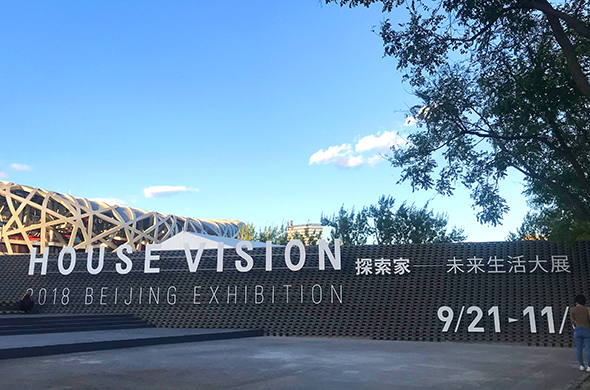
In Psychology of?the House?published in 1977, the author Marc Olivier believes that:?the basic intention of human dwellings comes from the “womb of motherhood.” From ancient rock caves, animal bone tents to the handrail houses, ancient Roman Domus?houses, after the modern innovations?in standard housing, despite the time and space, human beings are always looking for a symbol of maternal dependence, thus?constantly exploring?its forms of?transformation. Nowadays, what are people thinking about for the contemporary inhabiting “organs”?
On September 21, 2018, the “CHINA HOUSE VISION” was launched. The Japanese designer?Kenya Hara, served as the general planner of the exhibition. He thought that:?“?‘home’ is the most easy-to-understand thing for anyone, and it is a mirror to simplify complicated?problems.” Inviting ten architects and ten enterprise groups to cooperate with each other, the exhibition?interprets?future residences with the most basic thinking units, while exploring?the elements of today’s survival in China, and carry out “new attempts to live in the future.”
At first, the Chinese word of “home” is from the hustle and bustle, including the meaning of captivity, residence, and survival. For this word, is the most familiar one for Chinese people who have a common traditional cultural experience. However, it is not only a place with a common meaning, but more importantly, it stands for the field of a relationship between a single person and those surrounding him. It?is the basic unit of life. Around the different “home” cultures, completely diversified?“conceptual forms” and “architectural forms” are derived. It can be seen that the concept of the family is not fixed. Looking around the moment, multiple layers?of contradictions are intertwined with explorations, on the one hand, the “housing issue” becomes a?highly?discussed topic, and on the other hand, the philosophical designers are eager to practice, from “Foster + Partners – Sustainable Living: “Sharing the future” to “CHINA HOUSE VISION”,?the exploration of the housing problem has never ceased?or become more active, and the boundaries of the family have changed passively or actively in the change over the epochs. Then, what is?“House Vision”?about?
Taking a house?as a mirror: Observing group phenomena
The gallery for “CHINA HOUSE VISION” is located in the South Square of the National Stadium?of China. The venue is designed by Japanese architect Kenya Hara. Ten architects?and companies?jointly presented their own thoughts on the future home around the theme of the exhibition “NEW GRAVITY”, whether it is the ingenious Mars residence, or the telescope protruding from the hutong, or the apartment experiment that focuses on solving the contradictions of reality: these explorers?focus on a micro-proposition, or refresh people’s?ideas with a crazy concept, or strive to land with reality?as their subject-in any case, the convergence of these reflections, expressions, and exchanges point to these relationships: among people, people and nature, people and space.
This article does not intend to describe the works of the ten architects one by one. Each piece of work can be extended to different degrees of in-depth discussion from the perspectives of concept, modeling, materials, and modes, but the intertwined demands behind them?are the focus of thinking, in other words, though the phenomena are collected?and observed,?what do these “explorers” find? What do they want to?say? What can the public do? The original research?by Kenya Hara?in the Designing?Design: “Design is infection, because the process created by the inspiration, is derived from the universal value and spiritual resonance of human beings,”?explorers set their foot?on resonance, showing a?glimpse of the clues, waiting for the audience to develop a more comprehensive imagination.
Nature, when was it rejected by us?
Imagination is the eye of the soul, bringing the ideal to a place that is temporarily unavailable. “Mars Case,” which Xiaomi cooperated with architect Li Hu and his team OPEN, can be said to be the most fictional?work in this exhibition: when “home” is placed in an extremely harsh environment, the function of being a streamlined decoration?is becoming clearer. A small-sized box contains a complete smart living space, and the fish eye shape can be compared to the stars?in the sky. It seems to be designed for the new home in distant outer space. In fact, it is based on the relentless questioning of?human beings who want to squander old homes: “If humans force themselves to move to Mars, what should we consider about today's existence?”
Stepping into the future home of aranya?and Liu Yichun (Dashe Architects) named House ATO, the first thing that comes to mind is “poetic dwelling,”?and a picture emerges instantly: Will the people in the original shacks lie?in their bathtubs, looking up at the stars? The structure of “ji cao wei”?obtained by splitting the Chinese word “舍”,?presents the most essential and original elements of the house: the roof, the support, and the foundation. The change may never be the basic element of the house. The change is the way people live. The space with stories can bring people into the mood?where they feel like?travelling?through ancient and modern times. People are moving forward and getting older. Now they look up at the stars, the relief of the rest, the freedom of the neighborhood, and where should they?start? MINI and Sun Dayong's “Scope Home”?is also striving to pursue “poetry and distance.” There are six periscopes in the courtyard, and the distant scenery is included in the residence. People are eager to blend in with the surrounding space, but they gradually become self-enclosed. As a result, the kaleidoscopic window reflects a perspective. The classical gardening technique has entered the home of the future. In modern urban civilization, what humans gradually lose is what they used to be.
To talk?boldly?about the relationship between “people and nature,” the “Living Garden,”?designed by Hanergy Group and Ma Yansong’s MAD Architects, can’t help but ask: “Can you still live like this?”?233 thin films of?solar energy?battery could be enough to let?people feel the endless value of the sun. This is the efficient use of natural gifts in the technical age. The roof of the huge organ wall gives people a sense of stability. The grass is delicious and colorful. The four seasons rotate in the field and people stand there enjoy the breeze.?At the same time, there seems to be a voice asking: when was the Nature quietly rejected by us?
Relationship Reorganization: Regaining shared life for solitary people
Living alone has almost become the norm for the survival of young people in contemporary cities. Keeping their distance from people, travelling alone, and taking two meals a day relying on convenient services?to complete repeated daily life in a narrow and sturdy space without excessive desire. The “Buddhism” survival model has spread and soaked into the Chinese youth. In this situation, it seems that there is unspeakable uneasiness, but we don’t know how to change it. Huari Furniture?and Shuhei Aoyama’s?“New Family Home—400 Box Community City”, Muji and Go Hasegawa’s “Muji Employee Dormitory” work with different micro modules to respectively respond to the trends?of living alone. The so-called “freshness” of the new family comes from the reminiscence of the external sharing of furniture in the life of the Hutong, “sleeping on furniture?while living outside the furniture,” the house moves freely like a box: the era has updated the solidified housing concept, but the humanistic concern?of social memory has never been consumed. Similarly, the “Muji Employee Dormitory” originating from the prototype of the Shanghai Good Projects dormitory that does not?only?intend?to solve the living conditions of a small number of employees, but also directly refers to the expansive traffic, dense population, insufficient housing and shortage of funds in the Chinese metropolis?where the younger generation has a serious conflict for survival.
Shared life is the key word for the common use of these architectural boxes, whether from shared furniture in a Beijing Hutong or employee apartments from cave dwellings, these concepts metaphorize a trend: the traditional Chinese residential form is where modern architects have regained the path of Chinese humanistic concern, and it has?also transformed?into a cultural gene that is indispensable for constructing China’s future civilization.
“The smallest?and?the biggest home”?cooperated by Youzhu and Nippon Design Center, TCL and Dong Biao, and the Crossboundaries’ work “Your Home,”?which focuses on the reconstruction of the living space,?with he use of dynamic, interconnected mode to change intervals, thus?achieve the most functional space utilization efficiency with minimal design. Vision and Yang Mingjie’s “Green House”, Haier Group and Yung Ho Chang’s “Smashing Device” tell of the new relationship between people and nature, space and composite appliances from different perspectives.
Secret is flower: Multi-faceted appeal of?reconstruction?on order
“Don’t show the whole, but to drive the other’s imagination through part of the secret." Japanese architect Masayuki Kurokawa?explained in his book Eight Aesthetic Consciousness of Japan.?HOUSE VISION has set the field in China this time. In the face of the survival problems encountered by some people, ten architects and enterprises have given ten “tentative answers”.?Exploring the future of life is actually asking questions about the actual contradictions, questioning the status quo, and asking questions outside the doubts, how can we solve them? Can we solve them?
At the end of the book Discrimination by Design, Leslie Kanes Weisman said, "Architecture is an important manifestation of social order. Unless society itself changes, the status quo of the building is difficult to reverse.” Design occupies an important position?in the knowledge map and modern industry. The important value also determines how the future relationship is built. However, design is only a part of the entire social system. It is still subject to the?diversified?forces of society’s structure, economy, politics, culture, and ideology. “Home” is actually a metaphor and extension of society. Exploring “home”, isn’t it about rethinking the unbalanced order? Is it reconstructing?the lifestyle of the human race? Why not remind people to think about the essence of life? Exploring the future is to explore future society, people, people and nature, people and space, etc. The restructuring of science, transportation, logistics, data and other industries is still a key proposition worthy of repeated discussion, CHINA HOUSE VISION seems to focus on the word “VISION”, “CHINA HOUSE VISION” gathers ten clues, which inspires?the audience to understand, feedback and reflect on their own way. But the responsibility of reconstructing order requires further long-term considerations.
Text by Zhang Yizhi, translated and edited by Sue/CAFA ART INFO
Photo by Yang Yixin, Courtesy of the organizer


